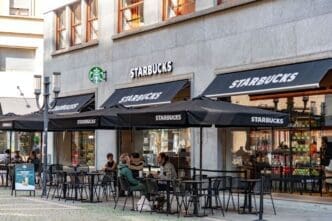Starbucks, the renowned coffee chain, is set to lay off over 1,000 corporate employees and streamline its menu to foster a turnaround in sluggish sales. The decision is part of a broader strategy to revive the brand by focusing on operational efficiency and customer satisfaction.
In an official statement, Starbucks detailed plans to remove certain beverages, including Frappuccino blended drinks, Royal English Breakfast Latte, and White Hot Chocolate. These eliminations are meant to simplify the ordering process and eliminate items that are either complex to prepare or have minimal sales impact. This move will result in a reduction of 30% in menu items, which is expected to refine the overall customer experience.
Additionally, Starbucks has already eliminated iced energy drinks and controversial olive oil coffee options from its offerings. The initiative aligns with a trend among retailers to cut down on less profitable items and concentrate on their core profitable products.
This period marks a challenging phase for Starbucks as it experiences a decline in sales for four consecutive quarters. Factors such as increasing prices and lengthy wait times have deterred some customers, leading to a push for enhanced customer service. Furthermore, the rise in mobile orders, which now make up over 30% of sales, has added pressure on staff, particularly during peak hours.
The company’s unionization efforts, with hundreds of stores voting in favor due to concerns over wages and working conditions, also play into the current corporate climate. In light of these developments, Starbucks is making efforts to streamline its workforce by eliminating about 1,100 corporate positions, including several unfilled roles. Senior leaders, such as vice presidents, are also expected to increase their presence in the Seattle and Toronto offices.
Under the leadership of newly appointed CEO Brian Niccol, Starbucks is keen on returning to its origins as a community-centered coffeehouse. Niccol’s strategy includes maintaining a balance between modern convenience and traditional customer engagement, such as providing comfortable seating and welcoming in-store environments. These efforts are supported by innovations like baristas adding personalized doodles to customers’ cups.
The new CEO, recognized for his expertise in turnaround strategies, has a vision of restoring the brand’s unique identity by integrating elements of personalized service. Starbucks is hopeful that these strategic decisions will resonate with consumers seeking both quality products and a distinctive coffeehouse experience.
In its bid to navigate financial struggles and redefine its brand identity, Starbucks is undertaking decisive actions with an eye on creating a more efficient and customer-friendly business model.








